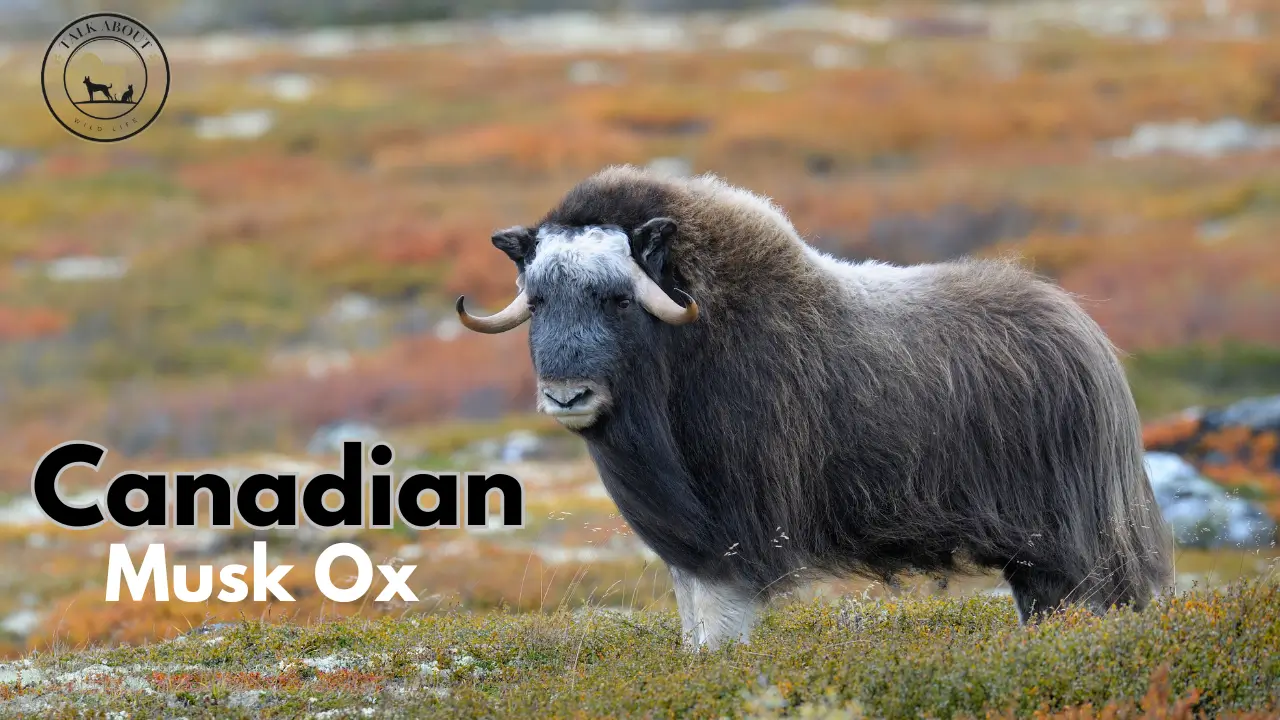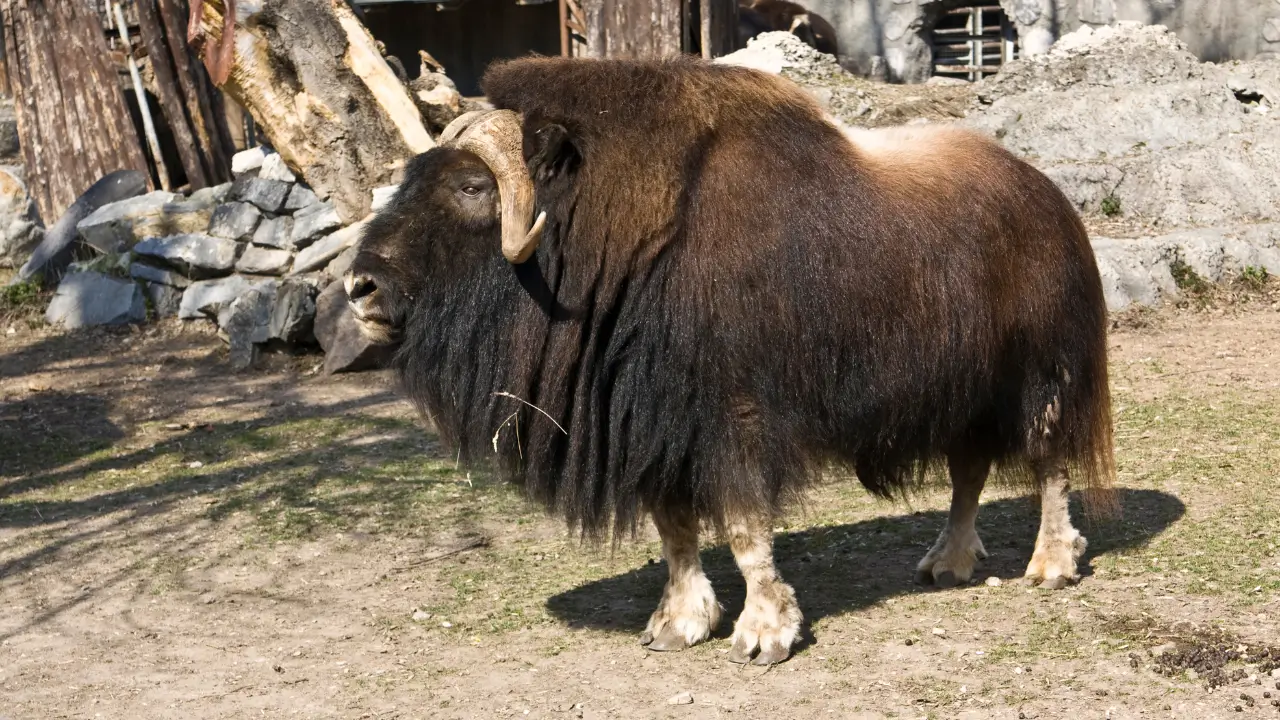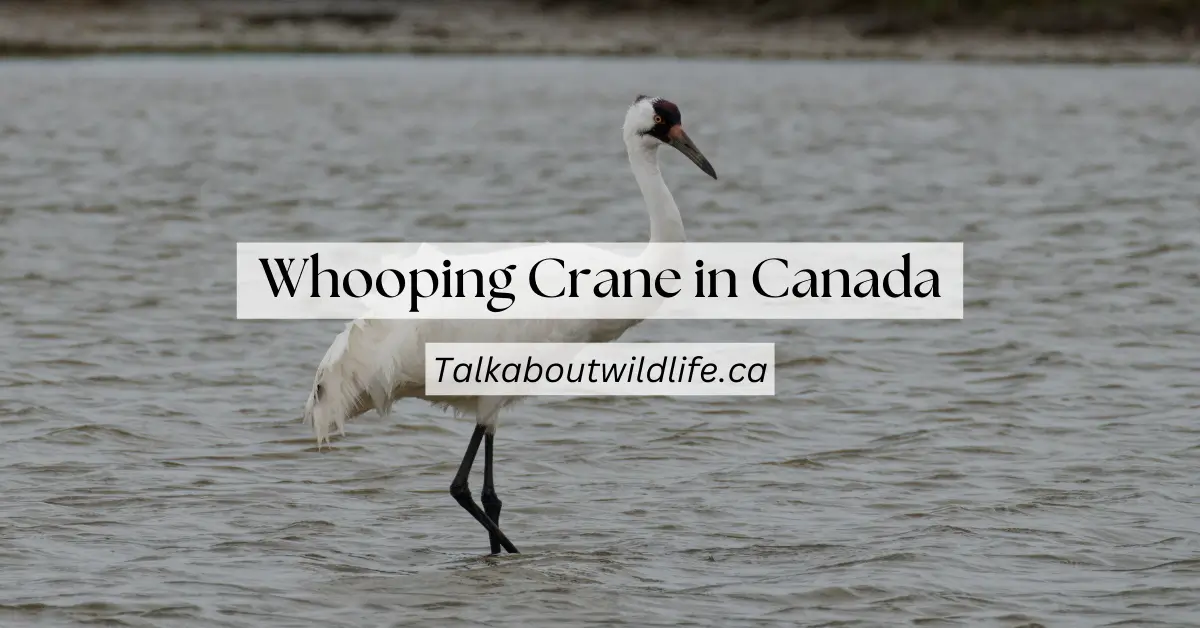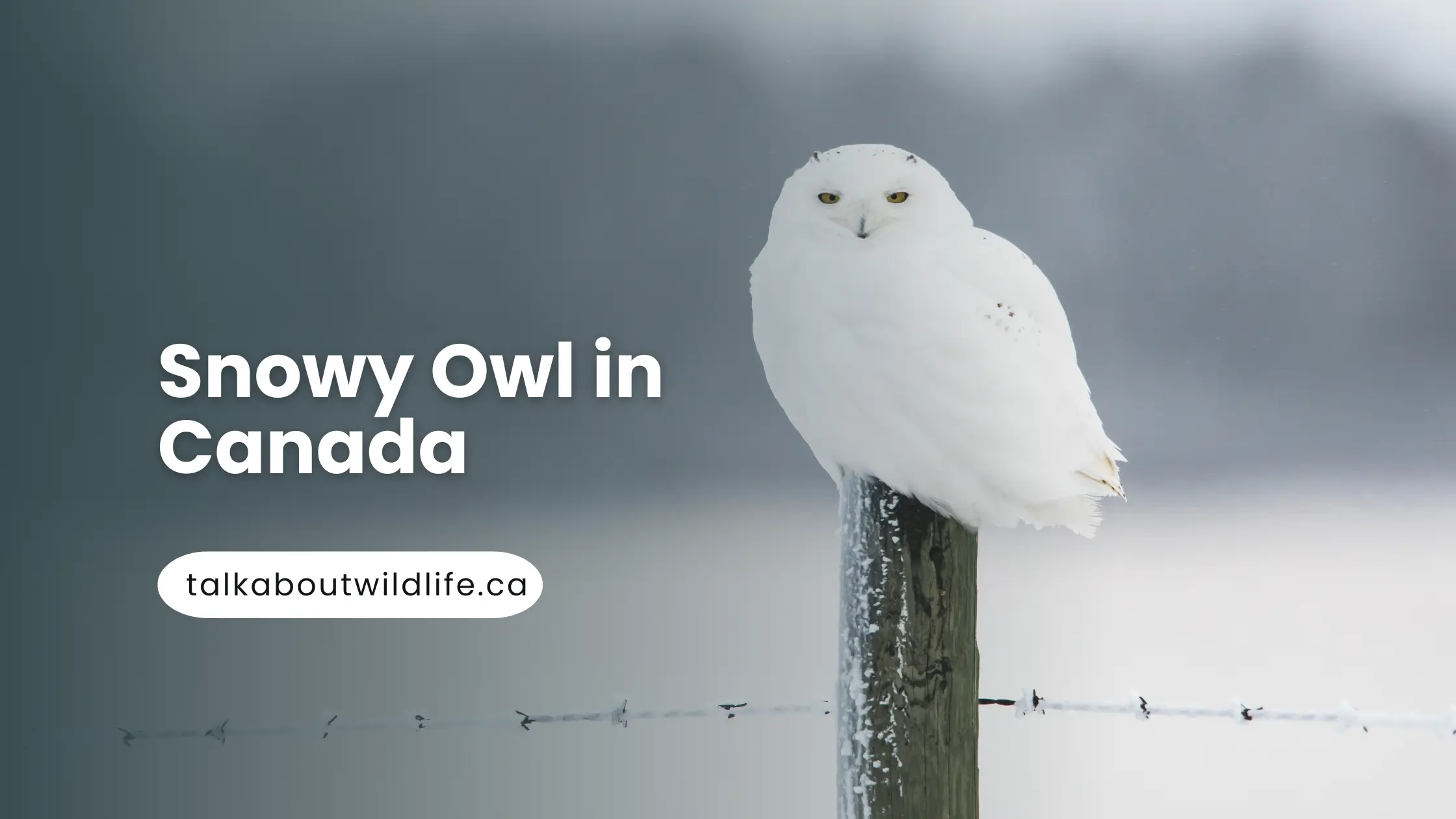The musk ox is a big, hairy animal that lives in icy Arctic areas. Its coat is extremely thick and woolly, which helps keep it warm in the frigid temperatures. These tough animals have large heads, short tails, and curved horns that both the males and females have. Although musk oxen look tough and formidable, they are usually calm and peaceful unless threatened.
The musk ox lives in the northern territories of Canada and is well-equipped to endure the harsh Arctic tundra environment. These shaggy, horned animals are well-adapted to the brutal cold of the Canadian north with their thick fur coats and ability to find food by digging through snow and ice with their hooves.
Physical Characteristics of Musk Ox
Here are some physical characteristics of these huge animals that will fascinate visitors to see them:
| Features | Relevant Information |
| Scientific Name | Ovibos moschatus |
| Life Span | Range from 12 to 20 years |
| Weight | Average is about 300 kg |
| Diet | Herbaceous plants, Sedge, Grasses, Willow, Mosses and Liches |
| Height | Average is about 1.5 meters |
| Habitat | Frozen Arctic areas, River valleys, and icy areas |
| Other Names | Musky-Sheep Ox |
| Status of specie | Not Endangered |
Interesting Facts About the Musk Ox in Canada
Here is a list of some attractive facts about the Canadian ox resident in Canada that will motivate you to visit and see them:
-
Adaptation:
They are well-adapted to the harsh Arctic climate with their thick, shaggy coats that can insulate them from temperatures as low as -50°C.
-
Social Structure:
Musk Oxen live in herds, typically consisting of a dominant bull, several cows, and their calves.
-
Adopting Dominance:
During the breeding season, bulls engage in fierce battles, using their massive horns to establish dominance.
-
Reason Behind Their Name:
Musk Oxen get their name from the strong, musky odor that bulls emit during the breeding season.
-
Wool:
Their qiviut wool, which is shed annually, is highly prized for its softness and warmth, and is known as the “Arctic wool.”
-
Indigenous Significance:
Musk Oxen are considered a critical food source for some domestic communities in Canada’s North.
-
Defense Mechanism:
Musk Oxen are skilled at defending themselves from predators like wolves and bears by forming a defensive circle with their horns facing outwards.
-
Coping with Different Environments:
Their hooves are adapted for digging through snow to reach the vegetation underneath.
-
Behavior:
Musk Oxen are known for their calm nature but can become aggressive when threatened or during the breeding season.
-
Symbol:
Musk Oxen are featured on the Canadian 25-cent coin, also known as the “Quarter.”
SightSeeing of Musk Ox in Canada
Despite the less diverse habitat of this specie, they are mostly clustered on the cold areas of the country.
Ideal Places to See the Musk Ox
Following are some ideal places to see these giant animals in the Canadian territory and capture them in your photographs:
| Direction of the Country | Places Where Musk Ox are Found |
| Western Territory | Yukon |
| Northern Territory (Major Numbers are found here) | Nunavut, Northwest Territories, and Central regions of the Arctic |
| Eastern Territory | Quebec |
Following is a list of some specific places in which the Musk ox can be seen and captured by the cameras.
- Banks Island
- Ellesmere Island
- Bathurst Island
- Devon Island
- Melville Island
- Victoria Island
Best Time to Capture Musk Ox With Your Eye
Musk Ox move in herds and migrate from one area to another depending on the season. Here is the ideal time to see these giant animals with your eyes:
| Season | Places to See Them |
| End May to September start | Northwestern territories and Nunavut |
| End June to August start | Banks Island, Ellesmere Island |
| End May to July start | Wapusk National Park in Manitoba |
These wild animals are never guaranteed to be seen because their migration patterns are influenced by the season and temperature in the place where they live.






